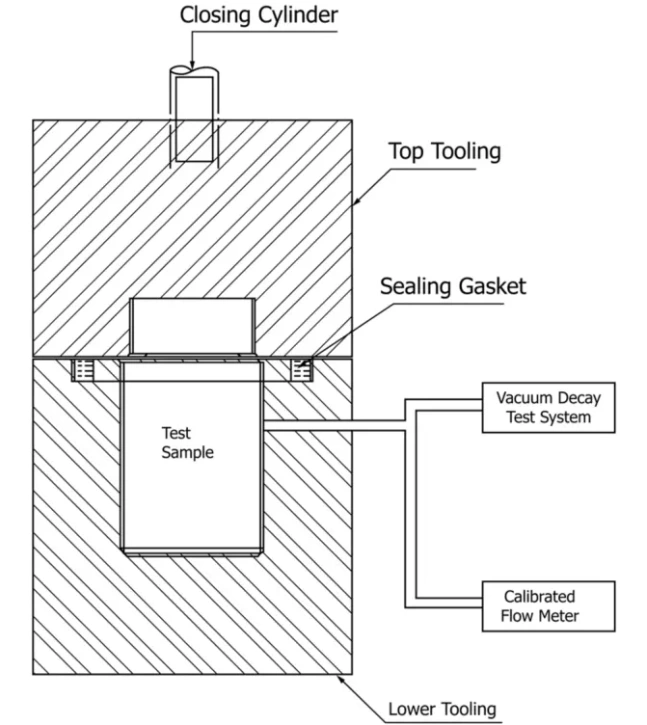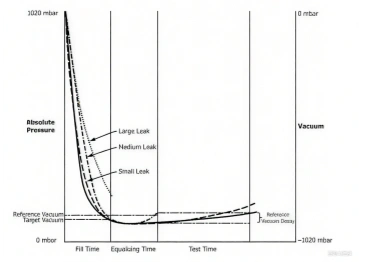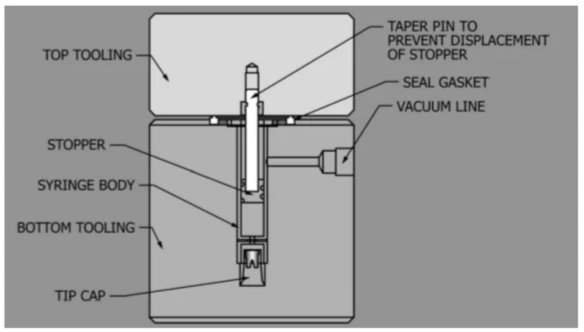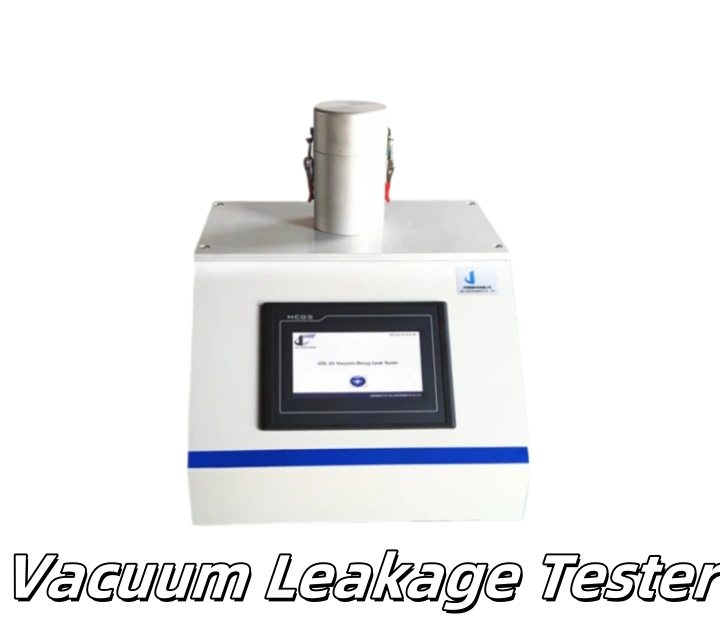Choose our equipment for stronger brand reputation
Vacuum Leak Detection
About Us
Vacuum Leakage Tester
The vacuum decay leak test is a non‑destructivenon‑destructive, quantitative method widely used to verify the integrity of packaging seals. It’s standardized under ASTM F2338‑09 (reapproved 2013), and recognized by regulatory bodies such as the FDA and USP <1207>. This method monitors pressure changes in a sealed chamber to detect micro-leaks5 microns.
Relevant Standards & Regulations
- ASTM F2338: Defines vacuum decay test for leak detection.
- USP <1207>: Recommends deterministic CCI methods such as vacuum decay.
- Also related to ISO 11607, ISO 8871‑5, USP 1207.
Applications
- Pharmaceuticals: Vials, ampoules, pre-filled syringes, IV bags.
- Medical devices: Blister packs, trays, sterile packaging.
- Food & Beverage: Flexible pouches, MAP trays, bottles.
- Cosmetics & Others: Ensuring seal integrity and contamination prevention.
Recommended Application Scenarios
- Sterile drug packaging such as injections, vaccines, and biological products
- Sealing inspection of food packaging containing gases or prone to oxidation
- Sterile barrier validation of disposable medical device packaging
- Leak testing for microelectronics and precision optical component packaging
- Pharmaceutical stability studies and long-term accelerated aging package validation
vacuum decay leak testing principle – Illustrated Workflow
- Chamber Evacuation
The test starts by evacuating the chamber and test system for a set time. - Vacuum Level Setting
The target vacuum is based on package type, size, and contents. - Vacuum Isolation
Once the desired vacuum is reached, the vacuum source is sealed off. - Equilibration
A brief pause allows internal pressure to stabilize. - Pressure Monitoring
Pressure is monitored for any increase over time. - Leak Detection
A rising pressure (vacuum decay) signals a potential leak. If it exceeds a defined limit, leakage is confirmed. - Measurement Accuracy
Pressure transducers ensure precise and consistent readings.


Technical Insights
- Accuracy hinges on chamber design, sensor sensitivity, and optimized test parameters.
- For porous-lidded packages, physically mask or block porous surfaces to prevent false vacuum loss.
- Use pressure vs. time curves to differentiate true leaks from background or material outgassing.
Detection Sensitivity & Packaging Types
Packaging Type | Detectable Leak Diameter | Vacuum Level | Sensitivity Estimate |
| Rigid trays (no lid) | ≥ 50 µm | –400 mbar | — |
| Porous-lidded trays (masked) | ≥ 100 µm (wall), 125 µm (seal) | –400 mbar | ~10⁻² Pa·m³/s |
| Rigid non-porous containers | ≥ 5 µm | –500 mbar | ~10⁻³.⁴ Pa·m³/s |
| Glass syringes (headspace gas) | ≥ 5 µm | –750 mbar (abs +250 mbar) | ~10⁻⁴.¹ Pa·m³/s |
| Flexible, non‑porous packaging | Not specified | Application-specific | Qualitative (depends on system) |
Technical Insights
- Accuracy hinges on chamber design, sensor sensitivity, and optimized test parameters.
- For porous-lidded packages, physically mask or block porous surfaces to prevent false vacuum loss.
- Use pressure vs. time curves to differentiate true leaks from background or material outgassing.
A precise and sensitive leak detection method designed to assess packaging integrity by generating a vacuum environment.
Importance of vacuum decay leak test
We will write a prefix describing what makes people choose your business here

Necessity
Supporting Process Control and Quality Improvement 3
Vacuum leak detection is applicable not only for final product testing but can also be integrated into packaging production lines for online monitoring, early warning, and quality trend analysis. This enhances overall process capability (Cp/Cpk) and reduces batch failure rates.
Adaptable to Various Packaging Types 4
Whether for vials, syringes, blister packs, flexible pouches, or plastic bottles, vacuum decay methods can flexibly adapt to different packaging formats and materials, demonstrating broad applicability.
Ensuring Packaging Integrity and Product Safety 1
Vacuum leak detection is a non-destructive method capable of accurately identifying tiny leaks in packaging. Especially in industries such as pharmaceuticals, medical devices, and food, the sealing quality directly affects product sterility and safety. Vacuum-based testing can detect sealing defects early, preventing contamination, oxidation, and product failure risks.
Compliance with Industry Regulations and Standards 2
This method is widely used to meet international regulatory requirements such as USP, recognized as a standard validation approach. It is suitable for regulatory submissions, process validation, and batch release.
Advantages of Vacuum Leak Detection
| Advantage Category | Specific Benefits |
| Non-Destructive | Maintains sample integrity, suitable for high-value samples or 100% inspection |
| High Sensitivity | Can detect extremely small leaks as low as 10⁻⁵ mbar·L/s, ideal for sterile drugs and sensitive products |
| High Degree of Automation | Supports full automatic control, data logging, trend analysis, and audit trails; compliant with 21 CFR Part 11 |
| Fast Testing Speed | Short cycle time per sample, suitable for batch laboratory testing or rapid online screening |
| Objective and Repeatable Data | Provides stable, quantitative results compared to traditional manual methods like water bath tests |
| Environmentally Friendly | No use of tracer gases or dyes, avoiding environmental pollution and operational risks |
Cell Instruments Advantages
Professional manufacturer background
With many years of R&D and production experience, we focus on packaging, medicine, food, and electronics. We have a strong R&D team and modern manufacturing system to ensure leading product quality and technical level.
Strong custom development capabilities
With deep technical accumulation, we provide tailor-made solutions, including function adjustment, software customization, and automation transformation, to flexibly respond to various testing needs and improve testing efficiency.
Complete after-sales service system
With a technical support and after-sales service network covering the national and overseas markets, we provide full-service services such as operation training and remote diagnosis to ensure that customers are worry-free and minimize downtime.


Get in touch
No. 5577 Gongyebei Rd, Licheng, Jinan, 250109, Shandong, P.R.C.
marketing@celtec.cn
+86 185 6001 3985

